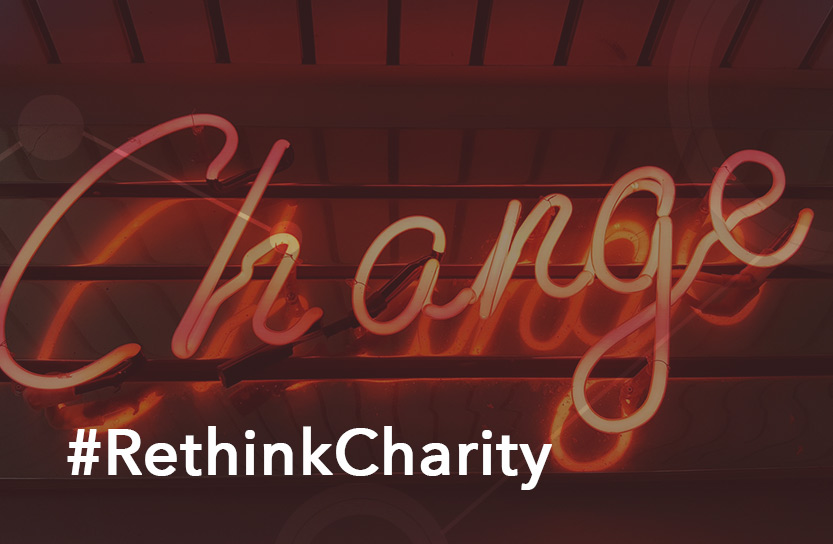The State of Giving in Canada: Millennials
December 06, 2017
9 min read
If you’re a millennial, you’re used to getting blamed for everything.
Earlier generations seem to relish heaping abuse upon you. From homeownership to diamonds, millennials are apparently wiping out the cornerstones of adult consumerism.
Articles that point the finger at your generation have achieved meme status. Google “millennials are killing” and you’ll find many often hilarious lists riffing on the topic.
It would be easy to look at part three of the Angus Reid Institute’s study, the State of Giving in Canada, and write an opinion piece titled “Millennials are Killing Charity.”
According to the study, your generation gives less than any other age group. But there are reasons for that. And, based on what the Angus Reid Institute heard from millennial respondents, there are many potential, committed, lifelong givers among your ranks.
Let’s look at what’s keeping millennials from reaching their full charitable potential—and what you can do about it.
The Millennial Giving Gap
More than any other age group, millennials believe they should be doing more to support charity. Fully 37% of millennials said they should be giving more, versus an average of 27% across other age groups who feel the same way.
Nonetheless, millennials also give less to charity than any other group. Just 44% of them give more than $100 to charity per year, versus a 58.5% average across all other age groups.

The Elephant in the Room
Money. Millennials have less than other age groups. Plenty of articles have been written describing how the increased cost of education and real estate, coupled with precarious work, have left the youngest adults in our society worse off than their parents.
According to the Angus Reid Institute, 56% of millennials list a lack of finances as the “whole reason” they aren’t donating more to charity.
That’s in comparison to a 47% average for all other age groups. Millennials are feeling the pinch, and that seems to stop them from giving more to charity.
What else is preventing millennials from giving?
Confusion, Detachment, Doubt
Of the millennials who say they should be doing more for charity, 66% said they’d give more money to charity if they “felt more confident about the whole thing,” while 59% of all other age groups combined feel the same way.
Also, 58% say they would give more if they could find the “perfect cause” for them, versus a 43.5% average among other age groups, and 54% would give more if they were “approached the right way,” versus 34.5% per cent.
Meanwhile, about half of millennials agreed with the statement, “With all the requests and life so busy, I feel like I don’t have enough control over what I’m doing with charitable donations.”

The story I take away from these numbers reaffirms what I believe, and what shapes CHIMP’s missions: that people—in this case, millennials—lack resources that can help them objectively learn about causes and engage in a meaningful way with charity.
Which is unfortunate, because this section of the State of Giving in Canada also suggests that, in addition to feeling like they could do more for charity, millennials have the mindset of future donors.
A Matter of Trust
More than other age groups, millennials have faith in charities to do the right thing. Just 62% agreed with the statement, “Charities waste too much money on salaries and admin and fundraising,” compared to 77.5% of other age groups.
And 54% said that charities could be trusted with the money people donate to them, versus 48.5% of the total population.
It’s good to hear that millennials trust charity, because they’re the future of giving in Canada. As I pointed out in a previous post, trust is key to becoming an engaged, long-term donor.
However, the numbers also suggest that there’s work charities could be doing to win over millennials ’ good faith. That includes being transparent about their funding and the work they do.
If a charity isn’t fulfilling its promises, millennials will find out. More than any other generation that has come before, this one knows how to do their research—and share their findings.
That Whole Internet Thing
Out of any group surveyed, millennials were most likely to engage with charity online. Over the last two years, 33% of them responded to a request to support charity via social media, with just 19% of the rest of population doing the same. And 30% of them donated money when asked during checkout at an online store, compared to 13% of the rest of the population.

Compare this with the effectiveness of traditional fundraising techniques, as discussed in my previous post. Just 16% of the population has responded to requests for donations by phone, and 21% have responded to appeals on TV.
It isn’t only charities that are reaching out to them. Millennials are engaging each other in discussions about charity. About 60% of millennials said that engaging with charity on social media, by liking or sharing posts, has a very or fairly meaningful impact on the charities involved.

Millennials Volunteer
For me, one surprising takeaway from the State of Giving in Canada was just how much time millennials spend volunteering.
For instance, in the last two years, 18% of millennials volunteered in poverty relief, while just 9% of the age 35-54 cohort did the same.
There are reasons for this besides pure altruism, of course. The Angus Reid Institute’s report points out that many millennials are required to volunteer as part of high school graduation requirements. And when you’re just starting your career, volunteer hours can help fill out a thin resume.
Still, charities rarely have future donors walking through the front door—but that’s how they should be thinking of younger millennials who volunteer for them.
Working on-site, volunteering with a charity, is a great opportunity to see what that charity actually achieves, and how it works. That’s important when, as I discussed in my last post, 61% of Canadians say they lack trust in charity.
The Days to Come
If you’re a millennial, you may feel like you’re in a tough spot. Supporting charity might not be a priority.
But you’re still part of the largest age cohort in North America, one larger than Generation X, or even the Baby Boomers. According to an Oracle study, your generation is expected to have over $3.3 trillion in spending power by 2018.
Power is shifting to millennials. It doesn’t matter, right now, whether you’ve got five dollars to give, or five hundred. Starting immediately, and exercising your “charity muscle,” is the best way to make sure you and your cohort are ready to take on the task of supporting charity in the future. It’s donors who help shape how charities operate and the impact they have.
Our focus at CHIMP is to create tools that help people become long-term, proactive givers. And based on demographics alone, millennials are destined to become the next big group of donors.
For instance, with CHIMP, you’ve got the option of automatically withdrawing money from your bank account or credit card on a monthly basis, letting it accrue in your giving account, and then deciding where it goes later.
With so many causes in need of support, it’s hard to know where to start; using a giving account, you can commit money to charity, and then do your own research and decide how to use it.
I hope more charities will take the lead, and leverage millennials ’ strengths and opinions in order to help them develop as donors, and shape the future of the donor-charity relationship.
Millennials have faith in charity, and they want to give more. They’re more engaged on social media than any other group, and they volunteer more than anyone else. These are excellent entry points for building communities of donors, and educating millennials in philanthropy on a peer-to-peer level.
So don’t worry, millennials. You’re doing fine. In fact, you deserve more credit than you get. You want to make a positive change in the world, and we at CHIMP want to work with you to help make that happen.

